Brand Marketing Strategy: A Simple (Yet Complete) Process
The term “Nike” receives 6.7 million monthly searches, while “shoes” only receives 1.2 million monthly searches:
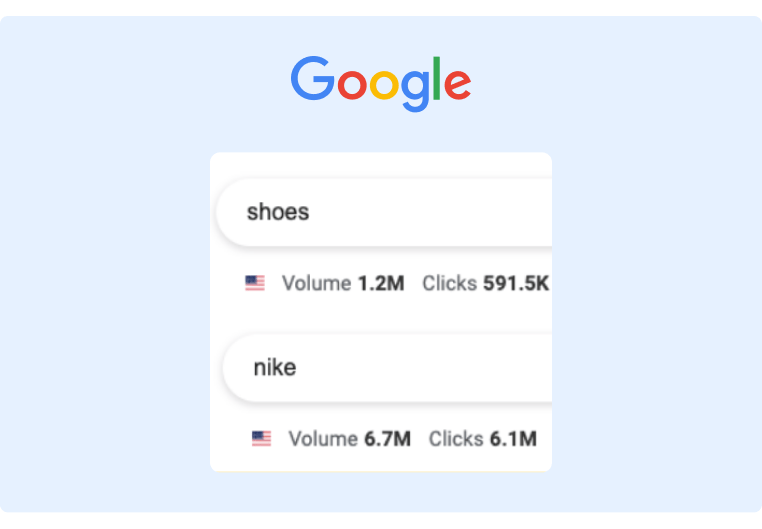
If you look at Nike reviews, you'll also see that they have a raving fan base, and many people claim to only purchase Nike products.
This popularity makes it easy for Nike to thrive and grow because customers are less price sensitive, have a higher lifetime value, and they typically tell their friends about the products.
So how did Nike create such widespread fame and a raving fanbase?
The broad answer is that they have an outstanding brand strategy.
In this post, we'll outline what a brand marketing strategy is, its key benefits, and how you can build a compelling brand marketing strategy that allows you to reap the same rewards as Nike.
What is a Brand Marketing Strategy?
A brand marketing strategy is a process that promotes the company's core identity to its target audience to win customer loyalty and increase positive recognition among the target audience.
To really understand the concept of a brand marketing strategy, let's break down the two aspects of a brand marketing strategy:
- The Brand: A company's brand is the essence (quality, service, core values, etc.) of a company
- The Marketing: Marketing is the company's effort to spread a particular message
When you combine these two concepts, a brand marketing strategy promotes who your company is and what you stand for to your target audience. So the goal of brand marketing isn't necessarily to drive direct conversions, but rather to become known to your target audience and begin to build a positive relationship.
What Are the Benefits of a Brand Marketing Strategy?
Here are a few advantages of a strong brand marketing strategy.
Stronger Customer Loyalty
While creating a brand identity, a few core values probably include great quality and customer service. So assuming customers receive the same outstanding experience each time they shop with your brand, an effective brand marketing strategy reinforces that great experience and keeps your company top of mind.
As a result, you'll receive increased loyalty, which means more repeat customers and decreased customer acquisition costs.
Shorter Sales Cycle
Prospects who are familiar with your brand and resonate with your message typically close faster than those who have never heard of it.
This is because they already know how you operate and what you stand for, so they tend to feel more comfortable doing business with your company.
In contrast, if they've never heard of your company before, they'll probably do a lot more research and badger your sales team with more questions.
Increase Word of Mouth Referrals
When a customer's friend asks for a recommendation, you want your company to be the first idea that comes to mind.
A brand marketing strategy is the best way to ensure that your company is always top of mind.
Remember that many of your customers probably also purchase competing products. For example, someone who buys McDonald's might also buy Chick Fil A. So if you're McDonald's, you want to ensure that you're the first brand that comes to mind the next time someone asks where they should eat.
In addition, how many times have you asked a friend for a product/service recommendation, and they responded with something like, "I haven't tried it yet, but I think that so-and-so is good."
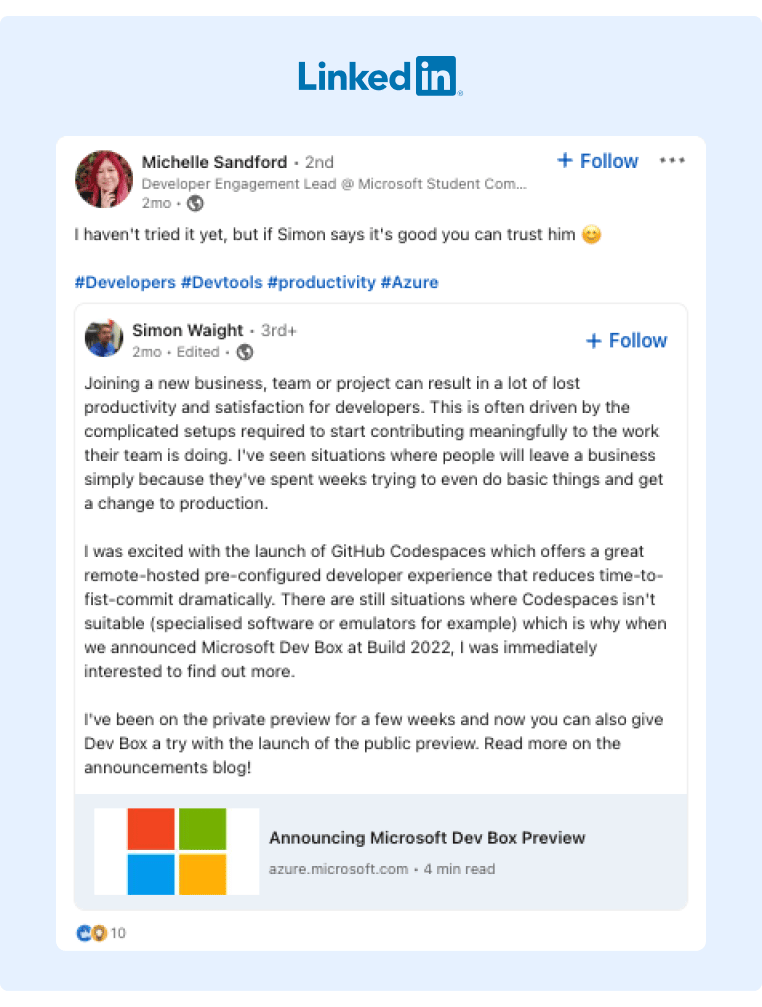
This is the power of a brand marketing strategy.
Even though this person hasn't tried the product or service, the company's brand marketing strategy has created such a strong impression that it still receives a secondhand referral.
Charge Premium Pricing
Companies like Lululemon, Victoria's Secret, and Nike can charge hundreds of dollars for clothes that cost a fraction of the price to produce.
Why?
Those brands deliver such excellent quality and service that they are now synonymous with luxury. So their customers are less price sensitive and even willing to pay a significant markup because of both the social status associated with the brands as well as the consistent quality.
Attract Top Talent
Finally, if you have a strong brand marketing strategy, you'll have an advantage over competitors in talent acquisition because you can hire some of your fans!
This is advantageous to you because:
-
Top talent will seek you out, reducing candidate sourcing costs
-
New hires will already be familiar with your core values and company policies
-
Fans are often the best employees because they genuinely care about the brand's success
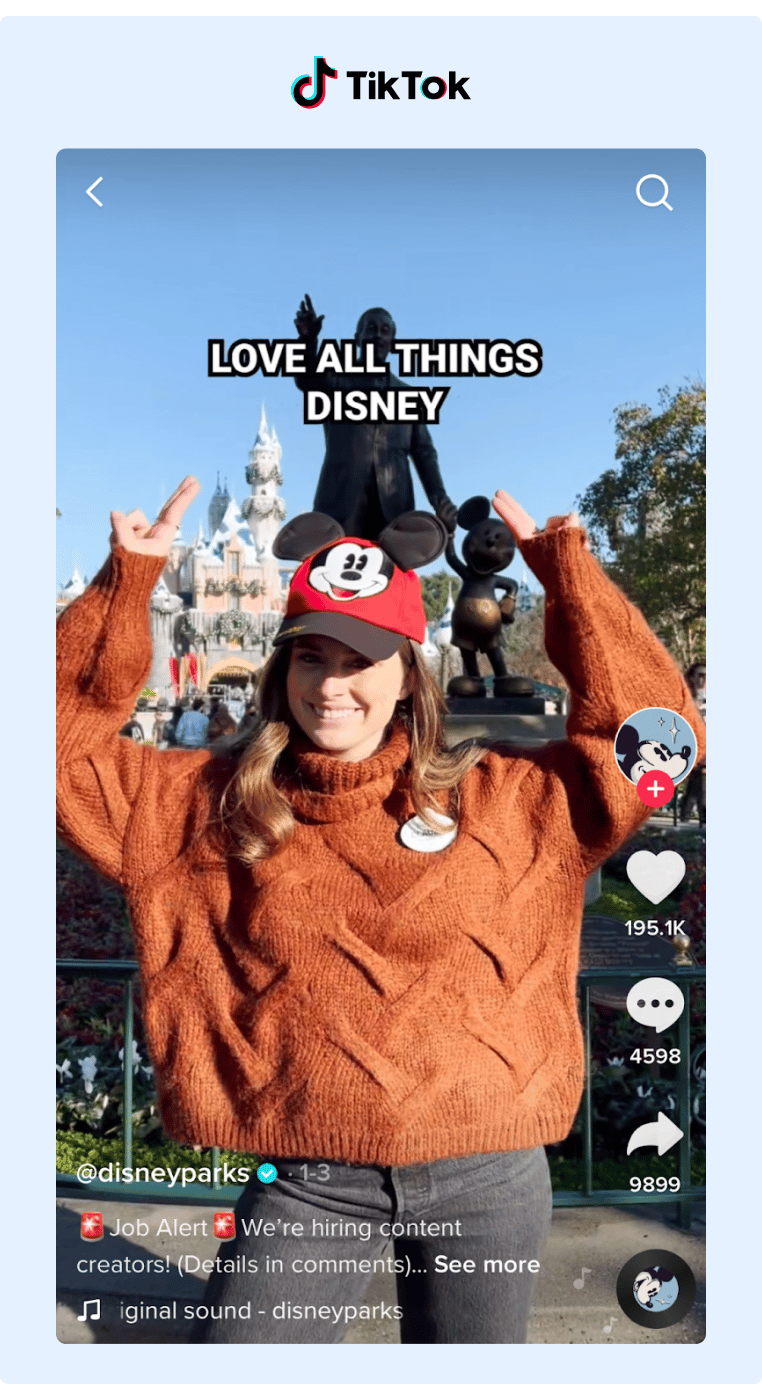
A Five Step Brand Marketing Strategy
Below, we’ll walk you through a brand marketing strategy that will help you increase brand awareness among your target audience.
Step 1: Defining and Aligning The Brand Vision
Before creating a marketing campaign for your brand, the entire company must know what brand identity you're trying to promote and establish processes to deliver on that identity.
Alignment is critical because if you promote one message and deliver a conflicting experience, customers will instantly lose trust in your brand.
This Tweet encapsulates this concept well:
Dunkin is like the White Castle of coffee. Its not the highest quality stuff, but has a unique taste, and they don't pretend to be something they're not...which makes us love them.
— Sam Parr (@thesamparr) September 1, 2022
To create a compelling brand story, start by looking at customer testimonials and identify what customers already say about you. Once you've noticed a few common themes, use those ideas as the backbone of your messaging.
For example, if customers say they adore you because customer service is always super fast, consider incorporating that into your brand messaging.
Then, communicate to your team that fast customer service is a core value and implement processes to ensure every customer receives a response in less than two hours.
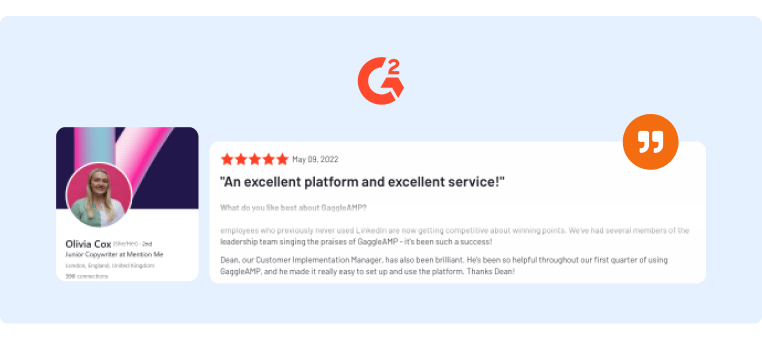
It's also helpful to look at competitors in the space and see what pain points are associated with their products/services as you can use that to differentiate your brand.
Checklist:
-
Look at customer testimonials and identify why customers love your brand
-
Extract a few common themes from the testimonials and adopt them as your core values
-
Talk to your team and create processes that ensure the customer experience lives up to the new brand identity
Step 2: Identifying Where Your Customers Are
Now that you have a specific brand message to share, the first step to marketing that message is identifying where your customers hang out so that you can promote on those platforms.
Examples of channels that already have mass attention and are therefore suitable for brand awareness marketing campaigns include:
-
Social media platforms
-
Groups (Facebook, Slack, etc.)
-
Search engines (particularly high-volume search terms)
-
Billboards
To help you find specific groups and platforms to target, here are a few ideas:
-
Ask your email list what social platforms they hang out on, what groups they're part of, etc.
-
Do some competitive research and see which social media platforms competitors are most active on
-
Look at your current analytics and see which channels are driving the most website traffic
After completing this exercise, you'll probably have quite a few different channels to choose from.
This is a good thing.
A key element of great brand marketing strategies is that they tend to take an omnichannel approach. This way, your target audience sees your brand everywhere, which increases familiarity and helps you build a stronger relationship with the target market.
Even if you don't have access to a huge content team, we'll discuss below how you can repurpose content to maximize content production with minimal resources.
Checklist:
- Brainstorm general marketing channels that already have mass attention from your target audience
- Narrow down the best platforms to target by:
- Asking your email list what platforms/groups they use
- Performing competitive research
- Analyzing analytics performance
- Select a handful of channels to test
Step 3: Creating Content For Your Brand Marketing Strategy
Now that you know which channels you want to target, create content that captures your ideal audience's attention.
While there are plenty of content marketing best practices, a good general rule for creating content designed to increase brand awareness is to make it memorable or remarkable.
While there isn't really a formula to create remarkable and memorable content, it tends to elicit a strong emotional response. So here's a workflow to consistently produce remarkable/memorable content:
-
Brainstorm a bunch of different content ideas
-
Pitch each idea to your team and have them rate their emotional reaction on a scale of 1-10
-
Select a handful of ideas and test them with your audience – iterate on themes that perform the best
If you're stuck during the brainstorming phase, here are a few different content formats you can use that will all enable you to build an emotional connection:
-
Entertaining
-
Stories/Experiences (from customers or the team)
-
Educational
-
Questions/Conversational
Below we'll walk through a few examples of these in action.
This video from PetSmart is an excellent example of a purely entertaining post that elicits a humorous emotional response.
While the video above doesn’t provide any educational value that would make someone want to purchase a PetSmart product, it’s memorable for those in their ideal audience (dog lovers) and keeps the brand top of mind.
In contrast, this post from The New York Presbyterian Hospital adopted the story/experience framework and created a different yet equally powerful emotional response.
To give you an example of the educational content format in action, check out this buyer awareness matrix post that Ahrefs created. When I read it, I had a "lightbulb moment." It was a relatively common idea, yet reframed in a unique way that kept me thinking about it over the next several days.
Most educational content fails because, even though it's accurate, it rarely provides an interesting angle on a subject. Without a unique angle, you won't be able to create a "lightbulb moment" and make it memorable.
So next time you create educational content, craft an original viewpoint or reframe on the topic you're discussing.
Pro Tip:
Before you start creating content, be sure to define your brand guidelines and brand personality. This is critical because posts that elicit a strong emotional response that isn't on brand could do more harm than good.
For example, if you have a plastic surgery facility, you could probably elicit a strong emotional response by discussing body image. Depending on the angle you take, and the brand's identity, it could do more harm than good.
Checklist:
-
Brainstorm a bunch of (on brand!) content ideas. Use the following frameworks if you’re stuck:
-
Entertaining
-
Stories/Experiences (from customers or the team)
-
Educational
-
Questions/Conversational
-
Pitch each idea to your team and rate their emotional reaction on a scale of 1-10
-
Select a handful of ideas and test them with your audience – iterate on themes that perform the best
Step 4: Creating a Content Amplification Framework
Once you've created a piece of content, you'll have to work to get it in front of your target audience. In fact, many content marketers recommend spending more time on content promotion and amplification than the actual creation process.
Here are the three factors we've found impact content reach the most:
-
Publishing frequency
-
The number of channels you're on
-
The number of brand advocates
Below we'll discuss how to increase all three of these factors to maximize your content's reach and overall brand recognition.
Increasing Publishing Frequency
You probably already know that posting great content daily is better than posting great content weekly. However, resource constraints are an obvious issue for most brands, and many social media managers worry that quality will slip.
First, while we always encourage creating high-quality content, consider creating a threshold where the content is "good enough." This is important for two reasons:
-
The reality is that the best way to get better at content creation and figure out what your audience loves is to simply test different ideas.
-
Most social media content (unlike blog content) is only relevant for a matter of hours, so to create a successful brand marketing strategy, you must post consistently.
Fortunately, you can do a few things to increase publishing frequency without significantly increasing your content marketing budget.
First, consider repurposing your content.
So look at videos, podcasts, blog posts, and other content assets you already have and then extract snippets of them to use as social media posts.
For example, the sales software company Gong frequently takes snippets from their white papers and ebooks and then reposts them on LinkedIn (typically with a CTA to download a copy).
If you need a tool to do this for you, you can use Repurpose House, which has both a software and human component.
Another hack to improve your content production is to improve your workflow. For example, schedule time weekly or monthly and then use a tool like Buffer to schedule posts in advance. This way, you don't have to constantly think of new ideas throughout the week, and if you need help from other team members for particular posts, they'll know the expected deadlines.
Finally, if you're still struggling to increase posting frequency, consider resharing posts created by employees. For example, Crumbl Cookies frequently shares posts created by its executives, and these posts still receive excellent engagement. For example, this post created by COO Sawyer Hemsley received over 700 likes and nearly 20 comments on the company page.
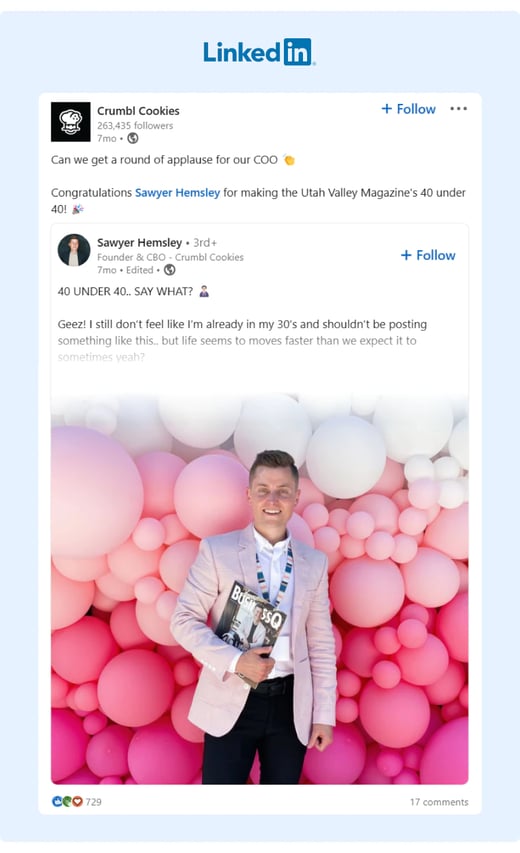
Increasing Active Channels
Now that you have a lot of content in production, posting to more channels is one of the easiest ways to extend your brand reach.
While we already discussed how you can leverage content repurposing to take snippets from larger pieces of content (podcasts, YouTube videos, blog posts, etc.), you can take the exact same social media snippets and publish them across a variety of different channels.
Vanessa Lau is an excellent example of how you can use the same snippets and post them on various social media channels.
Here's a Tweet on content creation that she also posted on Instagram.

Ideally, it's best to post natively to each platform, though you can see from Vanessa's post that after writing the initial Tweet, very minimal effort is required to repost to Instagram.
Objection: If I'm posting the same content to multiple platforms, won't people notice it's all the same content and get bored?
First, only a small fraction of your social media followers see your published posts due to how social algorithms work. So it's unlikely that your social followers will see every post you publish on any platform.
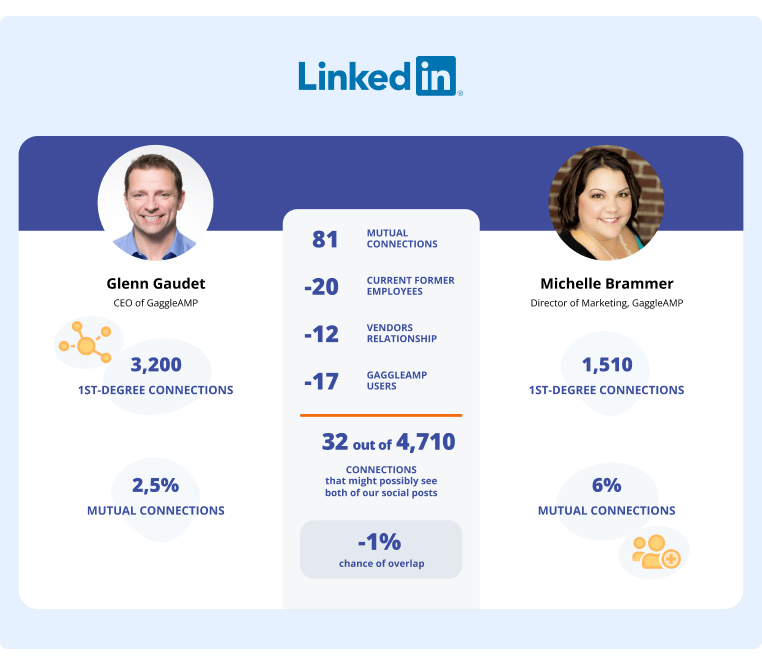
In addition, most people tend to have a preferred social media channel, and if you're not active on that channel, they probably won't see your posts on other platforms.
Finally, the entire point of a brand marketing strategy is that your ideal audience continuously sees your brand name so that it stays top of mind. So if they see the same message across multiple platforms, that's fine.
Increasing Brand Advocates
One recommendation from a trusted friend is significantly more powerful than a single marketing message from an unknown brand.
Fortunately, you can use this to your advantage by asking your employees to promote the brand for you on social media.
This strategy is known as employee advocacy, and the idea is that either:
-
Employees create their own posts about brand initiatives
-
Employees share branded content from the company page
Here's an excellent example of an employee advocacy post (created by the employee) that is designed to help with hiring initiatives:
Here’s a great example of an employee sharing branded content and adding their own commentary to the discussion:

Objection: My employees won't consistently engage. My messages are usually ignored, and it's too time-consuming to send personal requests to everyone.
We found that employee participation is a key problem for most companies that try to build an employee advocacy program, so we built GaggleAMP to solve this issue.
Specifically, GaggleAMP makes it easy for marketing/social media managers to assign specific engagement activities to specific employees at scale.
For example, you can create an engagement activity that specifies the platform and engagement activity (reshare, like, comment, etc.) and customize it with a link to a specific post, a prompt (if you want employees to create their own post), or other instructions.
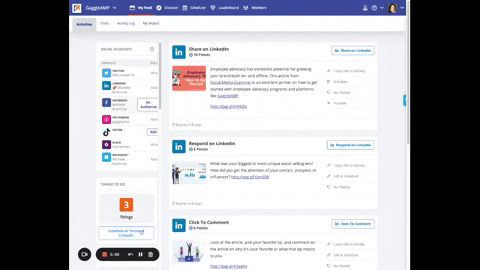
Then, you can assign it to specific employees or a group of employees (e.g., executives, marketing team, etc.).
This way, each employee receives a handful of personalized and relevant engagement activities, which significantly increases participation. And many activities only take one-click meaning your employees are able to participate in employee advocacy efforts without taking away from their day-to-day.
To see for yourself if GaggleAMP is a good fit for your brand, schedule a demo or jump into the platform for free today!
In addition to employee advocacy, you can leverage influencer marketing and customer referral programs to increase brand advocacy efforts.
Checklist:
-
Plan out a publishing schedule and then schedule posts in advance
-
Identify larger pieces of content that you can repurpose to maintain an aggressive publishing frequency
-
Adopt an omnichannel approach and republish content across a variety of social media platforms
-
Maximize brand advocacy by using a platform like GaggleAMP to assign engagement activities promoting brand initiatives to specific employees
Step 5: Measuring Success and Experimentation
Measuring the success of a brand strategy is tricky because it's often impossible to attribute brand awareness to a single conversion accurately.
Here are a few specific challenges with measuring brand awareness:
-
Brand awareness is designed to keep your brand name top of mind and build familiarity – so the campaign may (or may not) have done its job even if the user never interacted (clicked, liked, etc.) with it. So unlike most digital marketing campaigns, you don't have a clear indicator of whether or not the impression helped contribute to the end conversion.
-
Similarly, even if the customer did interact with the branding campaign, you don't have a way to determine which interactions were most critical to driving the conversion.
-
General engagement metrics (traffic, impressions, etc.) don't tell you who the branding campaign reached.
So how should you judge campaign performance?
While there isn't a perfect method to measure the ROI of your brand marketing strategy, we recommend looking at campaign performance from both:
-
A 30,000 foot view
-
A granular campaign perspective
To measure it from a 30,000 foot view, here are some things you can do:
-
Total sales
-
Monthly search volume for your brand name
-
Industry authority/mentions
-
Direct traffic
-
Survey your audience and ask how they heard about you
By keeping an eye on total sales, surveys, and industry mentions, you'll be able to judge who you're attracting.
In addition, you can also judge each campaign's basic metrics like:
- Estimated employee earned media value
-
Total engagement
-
Estimated impressions
-
Estimated unique reach
Checklist:
-
Measure metrics from a 30,000 foot view
-
Measure metrics on a campaign level
Start Building Your Branding Strategy Today
Branding is the moat that can give you an unfair advantage in the marketplace and enable you to charge more and exponentially increase the LTV of customers.
In addition, brand building isn't just writing out a mission statement and optimizing a tagline.
It's about consistently delivering the same amazing customer experience repeatedly for years.
So whether you're a startup or an established corporation, approach branding with a long-term view and be patient. Over time, you'll realize it's the most valuable marketing plays to your business.











